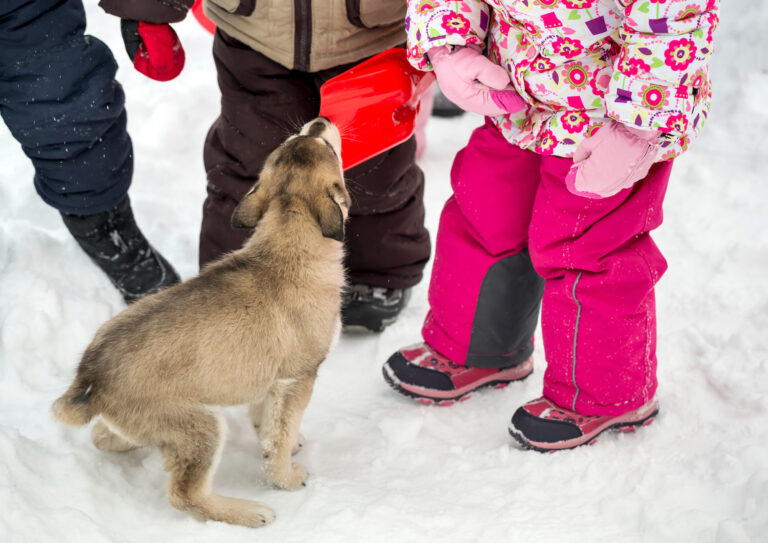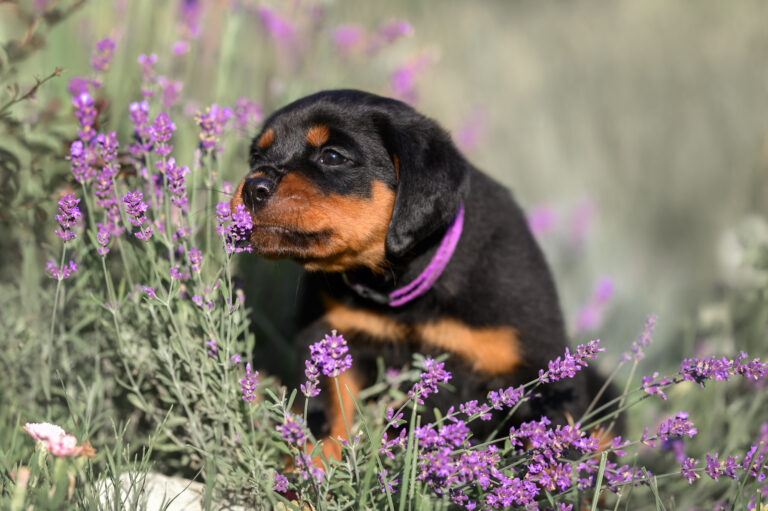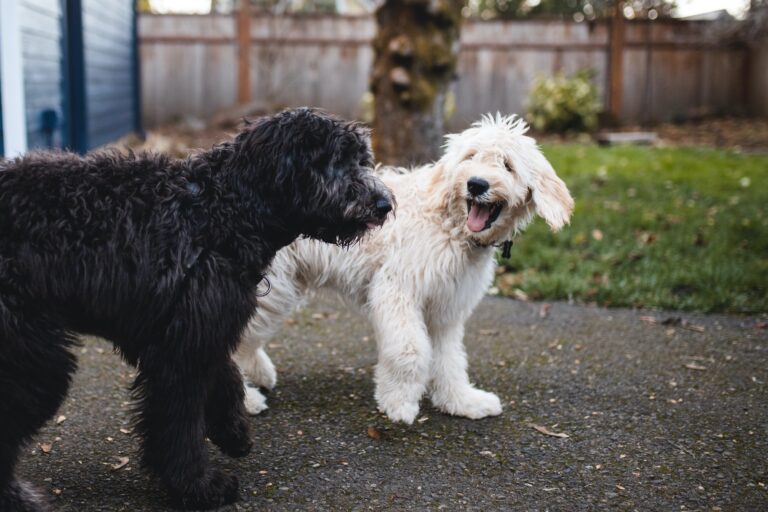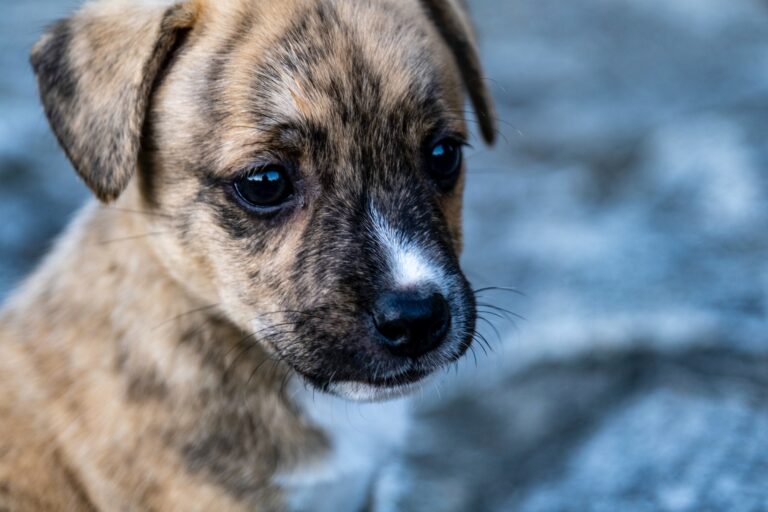Socializing your puppy is a crucial, yet often-overlooked, aspect of training. Successful socialization can go a long way toward preventing the stress, fear, and anxiety that can lead to behavioral and health problems—and it can promote dog-human bonding.
Puppy socialization doesn’t just refer to meeting other people and dogs, letting friends and strangers coo over your newest family member, and scheduling puppy playdates. Rather, socialization is the process of introducing your puppy to a wide range of the experiences, people, places, animals, stimuli, and sensations that they’re likely to encounter throughout their lifetime.
The goal is to create positive associations with these new experiences to help your puppy become a happy, confident dog who can handle unfamiliar situations.
The process can be overwhelming for both dog and human, so we put together a guide to why, how, and when to socialize to ensure your puppy is ready to (politely) take on the world.
When to start socializing your puppy
A growing body of research shows that the golden “window of socialization” for dogs happens between birth and approximately 16 weeks of age, when they’re still relatively cognitively flexible.
That means socialization should start immediately to maximize the positive effects.
Research shows that dogs who experience early socialization that begins “within a few days of birth” and continues into adulthood are “less likely to exhibit behavioral problems as adults, including aggression and fearfulness” and they’re more likely to engage positively with humans.
According to the American Veterinary Medical Association, waiting until 7 weeks of age to start the socialization process can cause wariness and even active avoidance of strangers in a puppy. Ideally, your puppy will be with their mother and original family for the first 8-12 weeks of their life. Any reputable person or organization adopting out puppies will have comprehensive socialization plans in place, so make sure to ask about this during the adoption process. Be prepared to start a full socialization program as soon as you bring your newest family member home.
Socialization and safety
Before diving into how to socialize your puppy, it’s important to address the potential risks of early socialization. The window of socialization falls within a puppy’s vaccination period, which means some socialization will happen before your puppy is fully immunized.
Unvaccinated puppies who are exposed to other dogs run the risk of contracting distemper, canine adenovirus (hepatitis), and parvovirus. Your puppy will receive their first set of DAPP shots when they are around 6 to 8 weeks old; they’ll then receive boosters until they reach 16 weeks, at which point they’re fully immunized.
It’s crucial to be careful about how you socialize your new pup before they’re fully protected because these illnesses are highly contagious and dangerous to unvaccinated puppies. Distemper is spread through airborne exposure (coughing, sneezing), and contact with infected surfaces such as water bowls; parvo is spread through direct or indirect contact with infected dogs’ feces.
That said, many veterinary and behavioral experts agree that socialization is so important to the long-term well-being of dogs that you can and should proceed with a safe socialization program when you bring your puppy home.
Safe socialization is possible by following a few general guidelines:
- Limit interactions to dogs you can confirm are fully vaccinated
- Look for puppy classes that require proof of vaccination
- Carry your puppy anywhere there may have been a lot of dogs, such as pet stores, hardware stores, and even the grass at popular parks to prevent exposure to airborne particles, water, or waste that could spread infections
- Take your puppy to a local park and let them watch people and dogs from the safety of a blanket or a play pen
How to socialize mindfully
To prevent sensory overload that can lead to fear responses, illness, and injury, take a mindful approach to introductions, ensuring you can control the environment around your puppy and successfully leverage positive reinforcement.
To guarantee success, start small and build steadily.
Where do I start?
Given how many things a well-socialized dog should be exposed to in a short period of time, you might be overwhelmed and unsure of where to start or how to ensure you’re being thorough.
The best way to start socializing your pup is to begin in the home.
Think of socialization as a ripple effect. You—and your home—are the center of your dog’s world, and with each new socialization task, you want to move out from your home base, spreading your dog’s understanding of the world wider and wider.
From the moment they come home, introduce people, animals, household items, and stimuli that can be found in their new safe space. Check out our socialization checklist below—it seems like a lot of things! But the UC Davis School of Veterinary Medicine recommends introducing about “90 different situations that are associated with pleasurable experiences” by the time a puppy is 14 weeks old.
Start small by giving them a small area in which to play and potty train, and expand from there.
Let them explore at their own pace
While it’s important to introduce them to as many new things as possible, you should also take care not to force your puppy into situations that frighten them, which can create a long-lasting fear response.

Many people to meet
“Simply put, not all exposure is created equal,” says Blake Rodriguez, trainer and founder of Dream Come True K9. “We want to expose our dogs to as much as we can, but be smart about our approach and do what’s best for the dog we have.”
During socialization experiences both inside and outside, your dog should learn “that socialization does not mean that we will force you into uncontrollable situations,” says Rodriguez. “We want our dog to feel that we will advocate for them. Socialization means being included but not having to just deal or put up with something.” Rodriguez cites an example of something many puppies may have to “deal with:” well-intentioned humans who want to smother, pick up, hold, pet, and generally be overwhelming to a dog. Your puppy does need this human interaction, but, as Rodriguez notes, they “might need the experience on a level two, not the level 20 that the humans are coming in hot with.”
Throwing your puppy into uncontrolled and overwhelming situations is one of the fastest ways, says Rodriguez, to get the opposite of what you intend with socialization.

…and things to sniff.
Every day is different
Every puppy’s needs and abilities will be different, and it’s important to be responsive to the cues they’re giving you, but there are some general socialization milestones and guidelines for most young dogs.
8 to 11 weeks: When you first bring your puppy home, get them used to being handled—touch their ears, paws, and other parts. This will make grooming and veterinary care easier later. Your puppy should be used to being around humans and is now ready to explore new social and physical environments. Start small by inviting over trusted friends and family members to meet your puppy in a controlled, safe environment. Take your pup on short walks around the neighborhood (steering clear of high-traffic areas, and any dog deposits on the street). Introduce them to a friend or family member’s vaccinated, even-tempered dog. It’s important to introduce your puppy to balanced dogs, because older dogs teach puppies both good and bad habits. “Introducing dogs that match their energy and aren’t overbearing is the best way to get your puppy to feel comfortable, trust, tolerate, and ultimately enjoy being around dogs,” says Rodriguez.
The first fear period, when your puppy is especially influenced by anything that scares them, starts around this time and continues for roughly three to four weeks. To prevent fear responses to anything that spooks them during this period, don’t pressure your puppy to interact with anything or anyone they don’t want to. Pair play and treats with positive interactions, so your puppy is associating these new experiences with good things.
If they are reactive to a certain situation, allow them to look at it from a distance and reward them for staying calm. Always allow them to walk away. Look for signs that your puppy is stressed, like lip-licking, turning their head away, or yawning, and don’t force them beyond their comfort level. If they bark or get freaked out by something, interrupt that focus and redirect it to something more productive, like play.

You seem nice
This is your puppy’s human socialization period. Introduce them to as many kinds of people as possible. Keep interactions short and controlled, and let your puppy rest as needed. Allow your puppy to show you how they want to be handled. For example, many dogs do not like being touched on the top of the head, so watch their body language and correct people as needed.
12 weeks: Around the time your puppy receives their second set of shots, they can enroll in a puppy class. Make sure to look for a class that requires proof of vaccination. Some vets recommend starting puppy classes as early as 8 weeks (after their first set of shots), so follow your vet recommendations and personal comfort level.
16 weeks: The golden window for socialization is largely closed, but that doesn’t mean all socialization stops—or that it can’t begin if you’ve just adopted an older puppy. Continue regular handling (for grooming and future vet visits) and socialization with people and other animals. This is also roughly the time when pups are fully vaccinated, so feel free to introduce them to a carefully vetted doggie daycare, or another environment with multiple dogs. Keep the first few visits short to prevent sensory overload or injury and gauge how they do with unknown dogs. Avoid dog runs—many trainers and vets say that they’re just not the best place for a puppy to learn to interact with dogs.
Be sure to practice patience, and try to see things from your puppy’s point of view! Taking extra time now to socialize them will pay off in many happy new experiences together later.
Ready to socialize but unsure of what to cover? See our downloadable checklist below and leave no stone unturned, or un-sniffed.
The Complete Puppy Socialization Checklist
Photo of tiny brindle puppy by Michael Kucharski on Unsplash; Photo of black and white dogs by Caleb Woods on Unsplash.










